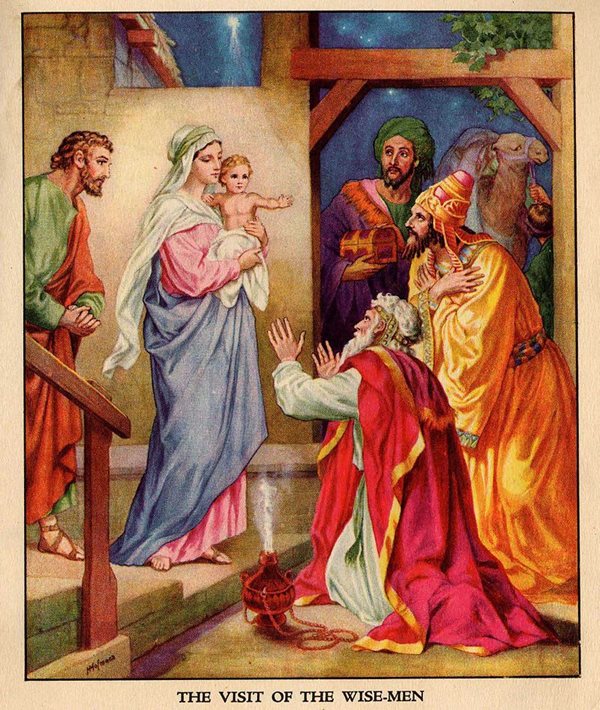Medieval
Ring Brooch with a Christmas tale
There are more than 100 ring brooches in the Museum’s archaeological collection but only one has the names of the Magi (wise men) inscribed on it.
By Sharon Weadick
Introduction
This ring brooch was an obvious selection for this Documentation Discovery article as the names of the Magi (wise men), Caspar, Balthasar and Melchior, are inscribed on it. The story of the Magi is much loved and celebrated and from just a few lines in the Gospel of Matthew its popularity has grown over the centuries.
Register entry: R4002 - Silver Brooch. circular. flat. raised inscription on face and back within raised slender border. External diam. 1 3/16 inch Wt. 0oz. 4dwt. 7gr.
The register entry is brief but fortunately, our current Director, Raghnall Ó Floinn, has identified this ring brooch as being one listed in the records of donations to the Royal Irish Academy dating to January 22nd 1855 (PRIA 6, 171-172). These records also provide additional information regarding its find place. The brooch was found at the Abbey of St Peter and Paul, Newtown, Trim Co. Meath, and was donated by The Very Reverend Richard Butler, Dean of Clonmacnoise. It was transferred to the Science and Art Museum, now the National Museum of Ireland, in the 1890s, soon after the Museum opened on Kildare Street.
Description
The brooch is silver. The frame is circular, wide and flat. The pin has a flanged transverse ridge with a double moulding and it has a pincer loop pin head. Both faces are inscribed with black letter script indicating a fourteenth to fifteenth century date for the brooch. The inscription ‘ihc n r i’, an abbreviation of the titulus ‘Jesus of Nazareth, King of the Jews’, is inscribed on the front of the frame, which is also decorated with intertwining foliage motifs and cross-hatching. Cross hatching is also applied on the reverse face. It is on this face that the names of the three magi ‘IACPAR:MELCHAR:BALTICAR’ – Casper, Melchior and Balthasar are inscribed.
Ring brooches
Ring brooches are one of the most common and important objects of medieval jewellery. They range from quite plain copper alloy brooches to highly ornate gold brooches set with gems. In form they consist of an open frame and a pin. The frame is annular (ring) in shape and is generally circular. The pin is short and does not extend beyond the frame. Ring brooches would have functioned as clothes fasteners worn by both men and women. Generally they date from the late twelfth to the fifteenth centuries.
Ring brooches would have been given as gifts. In medieval times, a ring brooch was a common gift to your betrothed. Some ring brooches, those with gem settings and prophylactic inscriptions, were also given to offer protection to the recipient. Gems and crystals were used in medieval jewellery not just for aesthetic purposes, but also for their amuletic qualities. Some ring brooches had inscriptions which were thought to give protection against harm and illness. The names of the Magi for example, were credited with powers to ward off epilepsy, recover lost property and offer protection when travelling.
The Magi

The story of adoration of the Magi has been developed and embellished over the years. The only biblical reference to the Magi is found in the Gospel of Matthew 2:1-12. In the Gospel Matthew does not mention the number of Magi, yet it is generally assumed that there were three as only three gifts were listed. He also refers to them as Magi rather than kings. In the first century AD, the term ‘Magi’ could refer to a priest (Zoroaster), astrologer or magician. The attribution of royalty to the Magi and the lands from which they originate, are later additions to the story. It was not until the Middle Ages that they were assigned names. Indeed by then the adoration of the Magi had become popular in medieval art, drama and jewellery making, and their names were often inscribed on finger rings and ring brooches.
To conclude…
This ring brooch is the only one in the Museum’s collections with an inscription of the names of the Magi and this is what contributes to its importance and makes it an ideal choice for a Christmas article. Just as this brooch enriches the Museum’s collections, the story of the Magi, following a star from the East in search of the new born King and bearing exotic gifts, enriches the otherwise humble story of the nativity.
Learn more…
This object is on public display in the “Medieval Ireland 1150-1550” exhibition on the first floor in the National Museum of Ireland – Archaeology on Kildare Street.
References
Deevy, M.B. (1998) Medieval ring brooches in Ireland. Bray: Wordwell Ltd.
Deevy, M.B (1998) ‘The Three Wise Men and medieval Ireland’, Archaeology Ireland, 12 (4), pp. 30-31.
Royal Irish Academy, ‘Donations of Antiquities’, Proceedings of the Royal Irish Academy (1836-1869), 6 (1853-1857), pp. 171-172.
With thanks to the Irish Antiquities Division.
Location:
Ring Brooch with a Christmas tale is located at:
On Display
Previous artefact:
Pipefish from North Bull Island, Dublin
Next artefact:
Roman Figurine from the Boyne Valley
